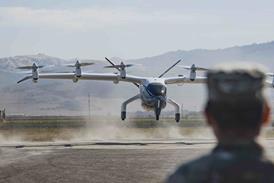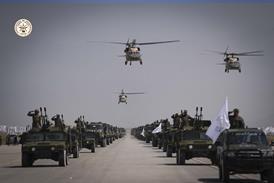Julian Moxon/BOURGES
AEROSPATIALE AND the Moscow Aviation Institute are building an experimental variable-thrust supersonic combustion ramjet (scramjet) engine, which will be ready for testing in two years' time.
Integrated with a ramjet, the engine will be capable of being run at between Mach 2 and M12, and is being designed for flight-testing aboard a vehicle weighing about 2t. In the long term, the technology could be applied to a variety of defence and civil platforms, including weapons, aircraft and spacecraft.
If successful, the engine would be the first truly flight-worthy variable-thrust scramjet in the world. It is being assembled in Russia, using experience gained during Aerospatiale's recent scramjet ground-test campaign at Bourges, France. This led to tests of an engine running at M7. The new scramjet would also be tested at Bourges.
Details of the engine are being kept under wraps, but it is known that it will take advantage of recent research into high-temperature materials to allow the installation of the variable-geometry surfaces which will change the combustion-chamber area and allow thrust variations. According to Aerospatiale's head of missile propulsion, Alain Chevalier, the secret lies in "the cooling of variable surfaces by liquid hydrogen", as well as the development of new thermal coatings.
A scramjet has no rotating parts, but operates by adding fuel (hydrogen) to air which has been compressed by the aircraft forebody (which acts essentially as the engine inlet). Supersonic shock waves develop inside the "engine", which cause the gas mixture to heat to more than 1,000 O C.
In the Aerospatiale Chamois engine, the hydrogen/air mixture self-ignites at the shock point, and expands through the nozzle. This engine is due to be tested again in April 1996, with a considerably more refined system for measuring heat density and the development of shock waves.
Russia, France and the USA are the only countries to have tested scramjets successfully. Funding for research in the USA has virtually dried up, although NASA is planning further scramjet work with Russia, leading to flight-tests of an engine to be mounted atop a rocket. Aerospatiale's work has been funded through the Prepha programme for supersonic research.
Source: Flight International























